Cooling Solutions for LED Lighting
投稿人:电子产品
2012-10-09
Although they use and dissipate much less power than conventional incandescent lighting, LEDs still create heat in the process of converting electrons to photons. Further, they tend to concentrate the heat they generate in a small, confined area. If the design of an LED light bulb or fixture does not properly dissipate the heat generated, it can adversely affect the product’s light output and longevity, and thus ensure its failure in the marketplace.
With the emergence of LEDs as a viable candidate to replace incandescent, halogen, and even fluorescent lighting, engineers have been working on ways to assure that heat is not a problem for LED lighting, and have recently come up with new ways to deal with it. In many cases, the heat-dissipation mechanisms rely on traditional cooling approaches for electronics, but apply them in new ways. But there are also some new approaches that show much promise.
Heat sinks
For linear LED lighting products, Advanced Thermal Solutions offers the maxiFLOW line of heat sinks. The maxiFLOW design features a low profile array of spread fins in either of two configurations (Figure 1) designed to maximize surface area so as to more effectively cool LEDs using traditional air convection cooling.
Able to reduce the temperatures of LEDs to which they’re directly attached by more than 50 percent, the sinks are fabricated from extruded aluminum to minimize thermal resistance from the base to the fins, reduce weight, and keep costs low. The devices have a height of only 26 mm and are 305 mm long; depth at the base is 45 mm and 87 mm at the top. For an unducted configuration, thermal resistance with an air velocity of 2.0 m/s (400 ft/s) is 0.6 °C/W for the fully fin device and 0.4 °C/W for the partially fin device.
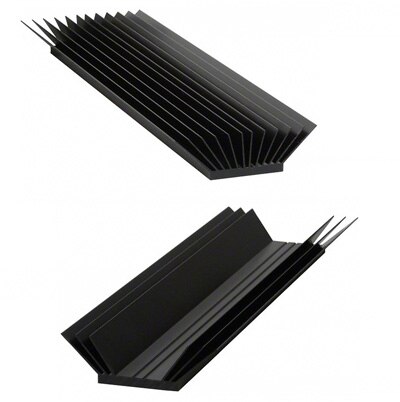
Lighting Science Group Corporation (LSG) points out that proper heat sink sizing is determined by a number of factors, including:
- Power dissipated
- Ambient conditions, such as ambient temperature and free or forced air convection
- Thermal path from LED to fixture housing
- Desired lifetime
- Desired light output
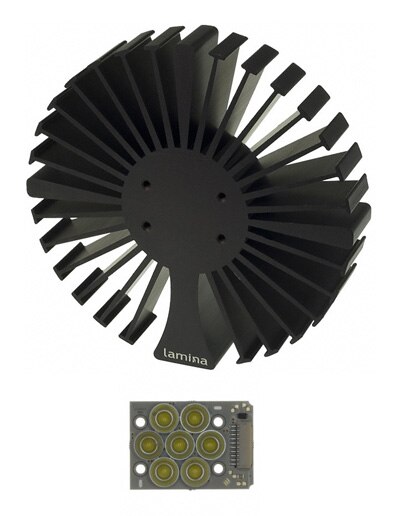
The light engines are designed to attach to heat sinks using screws with thermal grease in the joint or by using conductive epoxy. All Lamina heat sinks are drilled and tapped to accept the recommended fasteners. The heat sinks are radial shaped for design flexibility, anodized for enhanced thermal performance, and can be used in a wide range of mounting positions.
Similarly, Cree offers a specially designed heat sink (LMR020- HS00-0000-0000001) as an optional accessory to improve thermal performance of its LMR2 light modules for various applications. The optional heat sink attaches to the upper casting flange of the module (Figure 3), and for proper operation, the heat sink should be attached to the module with three M3x40 screws at 120°. Slots in the heat sink allow additional brackets, housings, and so forth to be incorporated into a luminaire design.
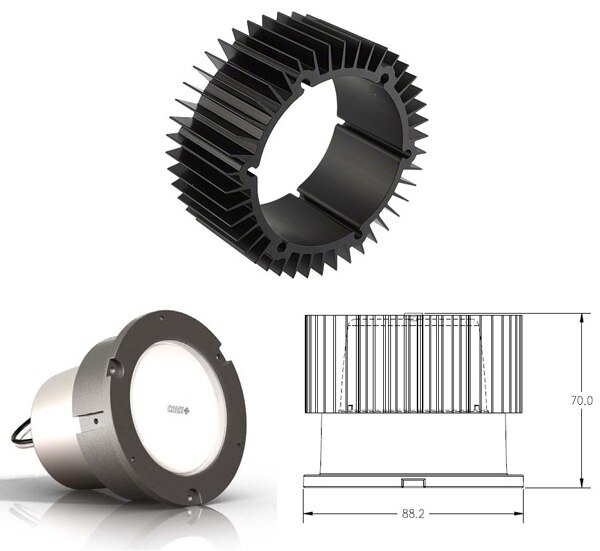
Active cooling
The most recent development in cooling for lighting is the inclusion of a subsystem to force air over the light system to keep it cool. This can be done using a combination heat sink and fan like those offered by Sunon.
Sunon’s TA001-09012 LED Cooling Module (Figure 4) has overall dimensions of just 20.5 mm high by 59 mm in diameter. It combines a heat sink made of ADC12 with a 3800 rpm fan only 38 mm in diameter. The unit’s thermal resistance is 1.2°C/W. Most importantly for use in LED lighting, the fan consumes only 0.21 W in operation and it has an MTTF of 50,000 hours, meaning it should last as long as an LED is expected to.
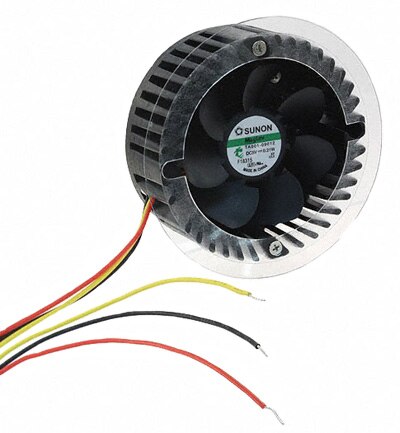
Another technology for active cooling that has been adopted by one major light bulb producer is SynJet from Aavid. SynJet uses a flexible diaphragm that “breathes”: it draws air in slowly and then expels it rapidly over the fins of a heat sink to produce convection cooling. The SynJet Spot Light 60 W Cooler (Figure 5) was developed specifically for cooling LED downlight and spotlight modules and arrays. It provides up to 60 W of cooling and consumes a maximum of 800 mW when operating from a 5 V source. Further, it operates very quietly, with a maximum SSPL of 28 dBA at 100 percent duty cycle, and only 19 dBA in silent mode.
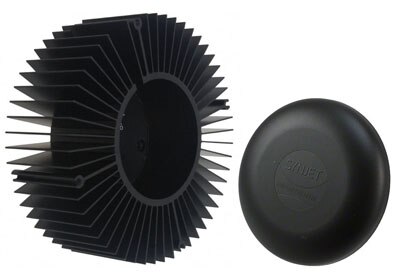
Summary
Determining an adequate thermal solution to ventilate and cool an LED system is vital for every SSL application. Heat is emitted from the back of an LED and requires a passive or active cooling solution to properly dissipate the heat and ventilate the SSL fixture. Heat sinks solve thermal management problems for low-lumen LED lamps. It is when you get into the high lumen counts that a heat sink alone may not meet the challenge and active cooling may be required to dissipate the heat produced by the LED components.
In order to create a viable active cooling solution for high-brightness LEDs, the method of thermal management must be inherently low in energy consumption, flexible enough to fit into a small form and have an expected life matching that of the light source itself. This article has presented several cooling alternatives. To obtain more information on the products mentioned here, use the links provided to access product pages on the DigiKey website.
免责声明:各个作者和/或论坛参与者在本网站发表的观点、看法和意见不代表 DigiKey 的观点、看法和意见,也不代表 DigiKey 官方政策。







 中国
中国